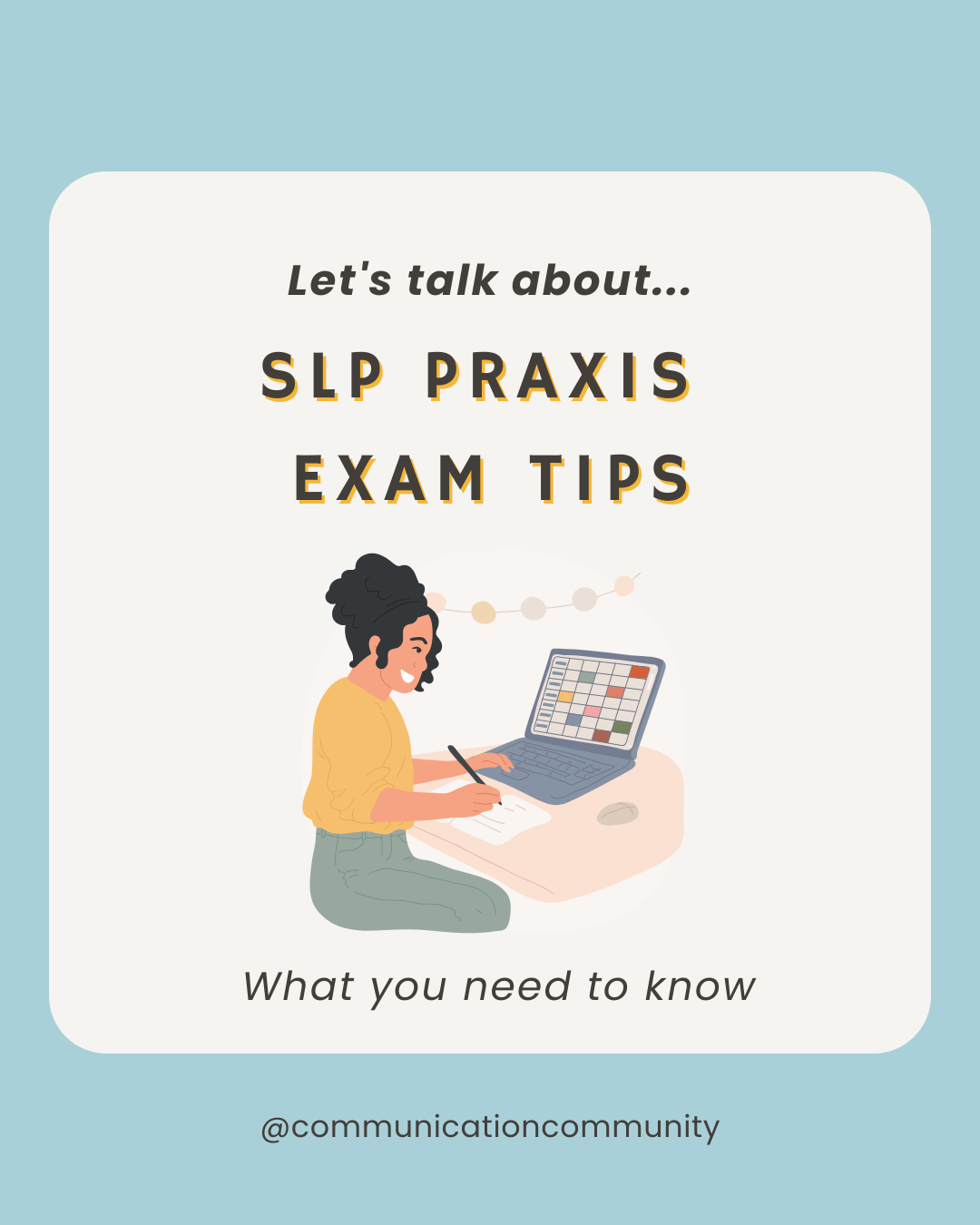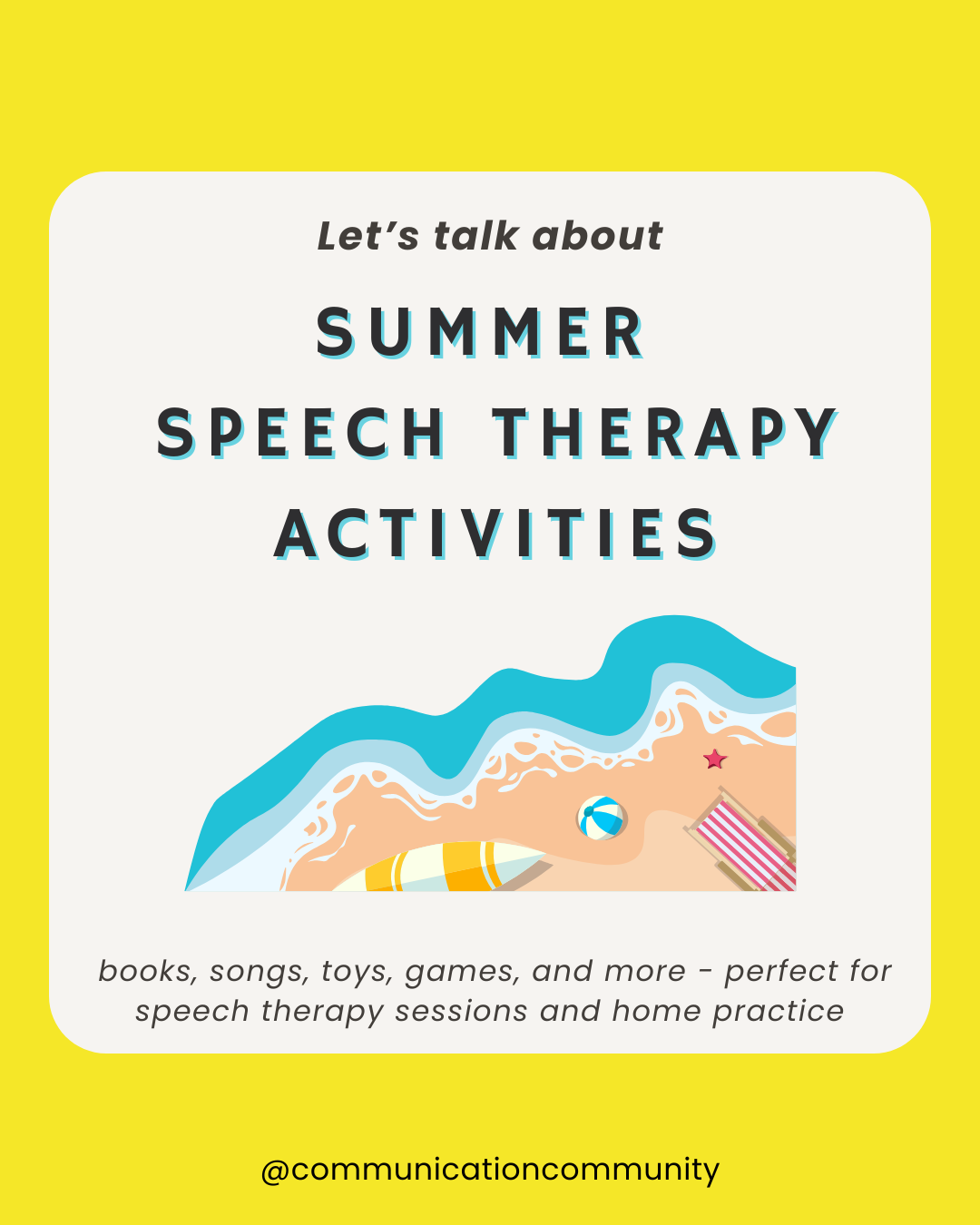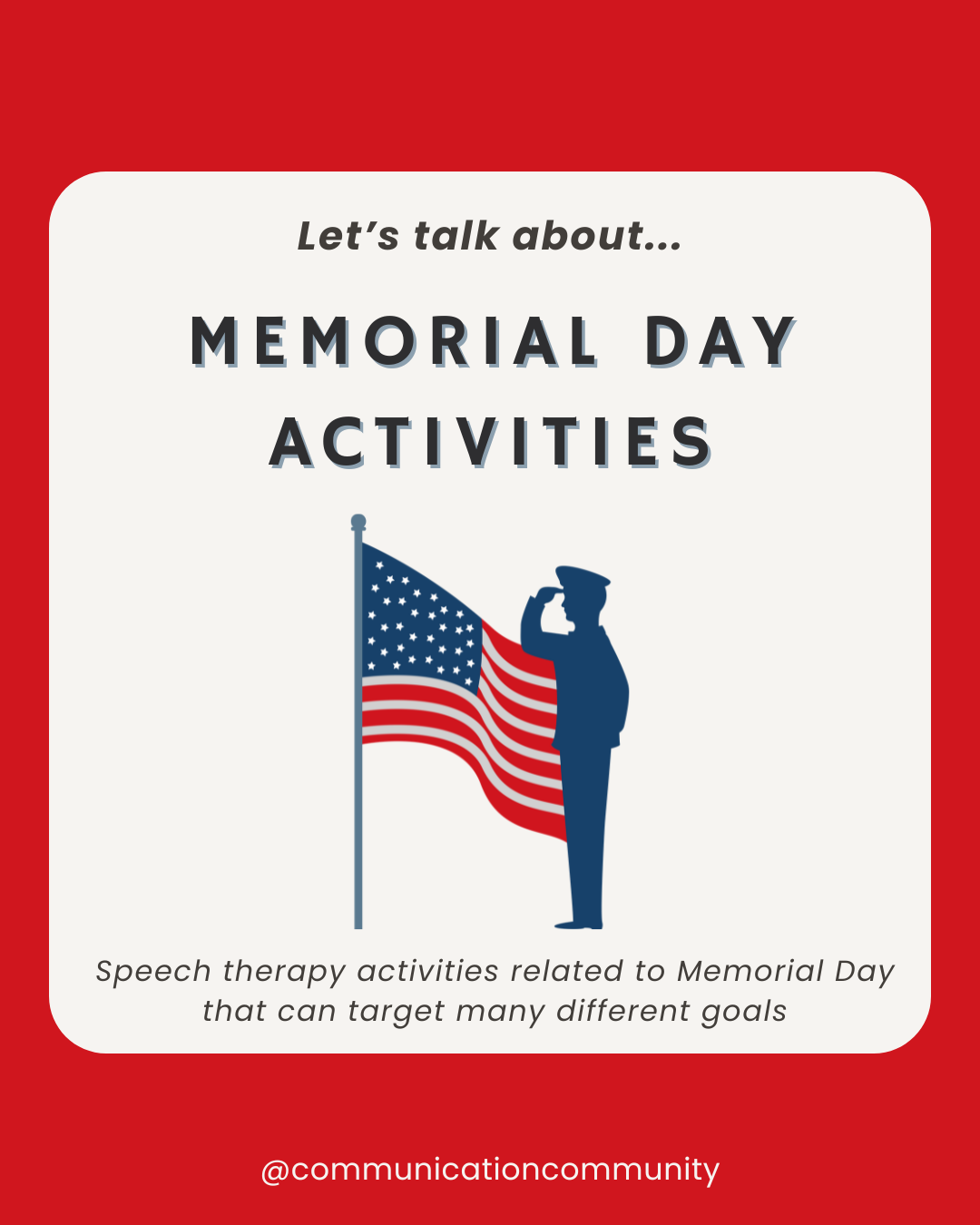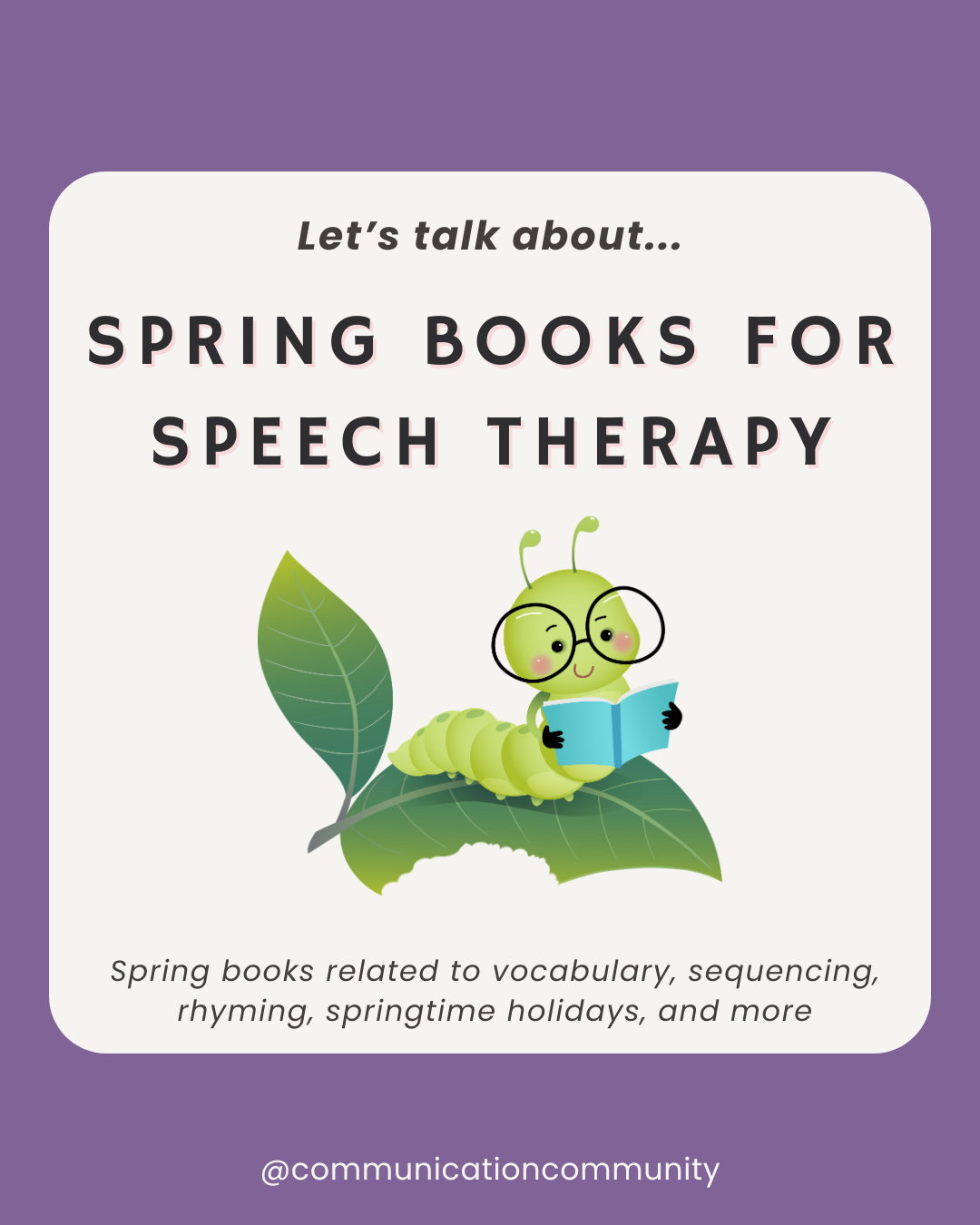Zingo! We'll make this short and sweet. One game but with tons of ways to use it to target speech and language goals. Not to mention… kids love it. So honestly, most of the time they don’t really think they are “doing work” (score!).
Zingo! Wait, like Bingo?
Pretty much. Zingo is designed to play like Bingo for pre-readers and early readers, ages 4 and up. Zingo is like Bingo where each player receives a board and you have to cover your board to win. We like it because it is usually an easy concept for kids to grasp and the game is flexible, so it can be modified in various ways to accommodate the individual you are working with. It’s also easy to set-up and take from place-to-place if you are working outside of a therapy room where you can store all of your materials. Game pieces include the small-ish Zingo boards (double-sided for more board variety) and the Zinger. Boards contain 9 images with their labels. The Zinger is a red, block-like object that holds and dispenses the Zingo tiles that have images with labels to match the items on the game boards. Images are animals and various objects like: owl, foot, ball, etc. Perfect for sight word practice too!
General game play: if you are playing by the instruction manual, a player is chosen to slide the Zinger forward to reveal 2 tiles. If a player sees a tile that matches an image on their card, they can call out the tile. If they are the first to call out the tile image, they can take the tile and place it on top of the matching image (in the event of a tie, the tiles go back into the Zinger). If all 9 spaces on a player’s Zingo board become filled, they yell out “Zingo!”
I have played this way, but usually will modify the game depending on the skill I might be targeting or the individual(s) I am playing against/watching play. For example, depending on time constraints, I may only require the 3-in-a-row before yelling “Zingo!”
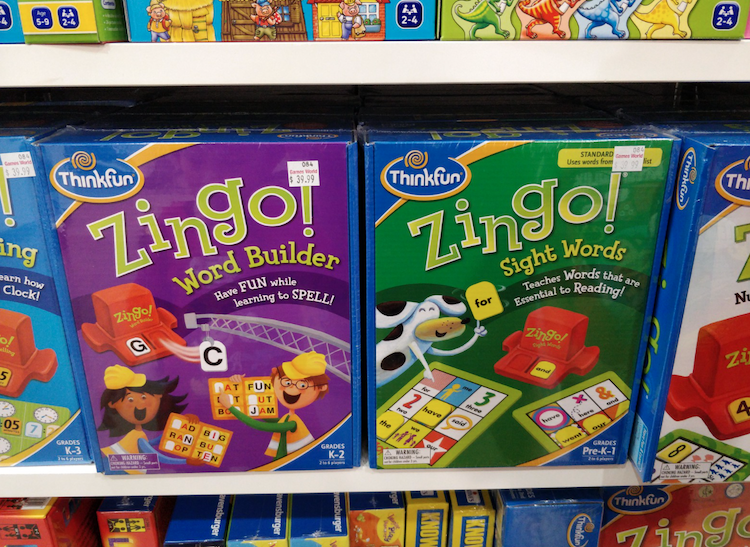
Ways we use Zingo in therapy: to target…
Following directions
A variety of directions can be targeted within this game (e.g., single, multi-step, etc.), such as “Place the tiles in, then slide the Zinger.” Sometimes, I like to incorporate conditional directions before taking a turn, such as, “If you get an animal tile, you can place it on your board. If you get an object tile, you skip your next turn.”
Turn-taking
I like to use this game for beginning level turn-takers because each turn can be super quick! When I target this skill, I modify the game so each player slides the Zinger on their own turn (no calling out; you can only claim on your turn) and is responsible for passing it to the next player.
Sentence expansion
This game is perfect as a base for using carrier phrases or generating [descriptive] sentences! For example, before a player places a tile on their board, they are required to use a designated carrier phrase “I see a ___.” Or they have to generate a sentence using the word from the tile that they selected.
Compare and contrast
Have each player state the similarities and/or differences between the 2 tiles they’ve received after sliding the Zinger. For a different level of difficulty, have the player assign the tile(s) they received to a category (e.g., [baseball] bat → sports) before placing on their board.
Phonological skills
Many of the labels on the Zingo tiles are considered to be sight words, so they are usually short and contain single syllables. Phonological awareness can be targeted by using sound blending to slowly read each label or try to generate rhyming words to match the tiles!
Fluency
For some of my younger kiddos, if I am working on a fluency shaping task within single words, I may have them use one of their strategies when producing each label (e.g., easy starts, stretchy speech, etc.).
Articulation
Though this is not something I have taken on, I know therapists who have targeted certain phonemes by pasting their own pictures on the boards and Zingo tiles. This may take a bit of work but can certainly be a good investment of your time if you have individuals on your caseload working on the same target sounds! You can also have individuals say specific target word(s) at each turn even if they’re not directly related to the pictures on the board.
AAC navigation
If you are working within an AAC user (especially for an emerging user/someone who is learning their system), try to match the drawn tile to the corresponding button in their device. AAC users can also target concepts like sentence expansion and describing.
& more!
Where can you get Zingo?
Usually Zingo is available at Target, Barnes & Noble, and on Amazon. Amazon features a few different styles of Zingo too!
Zingo
Zingo 1-2-3 Number
Zingo Sight Words
Zingo Word Builder
This post contains some affiliate links and we may be (slightly) compensated if you use them, but all opinions are our own. We appreciate the support!

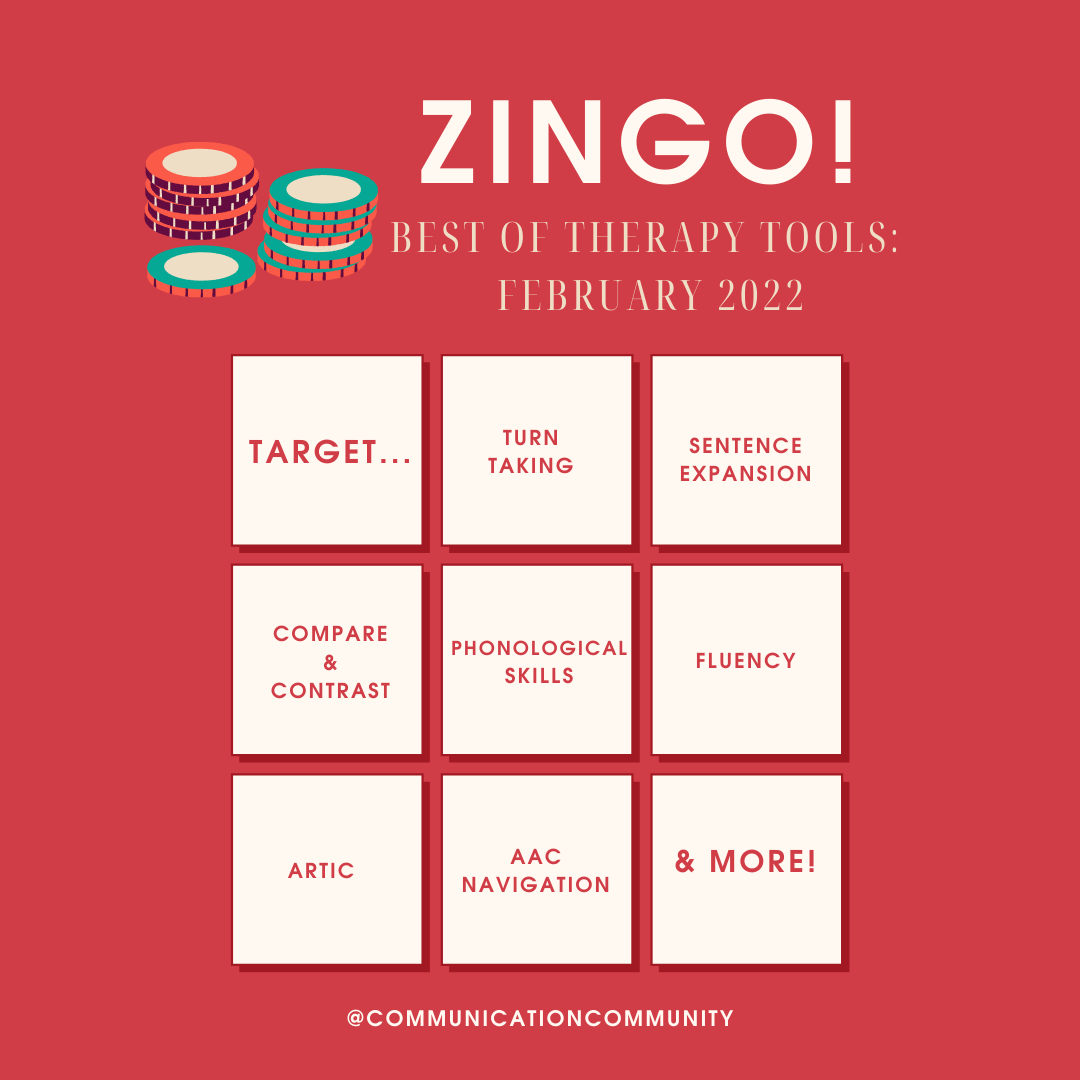
![How to Write Apraxia Goals [with goal bank]](https://www.communicationcommunity.com/content/images/2024/07/Apraxia-Goals--1-.png)
